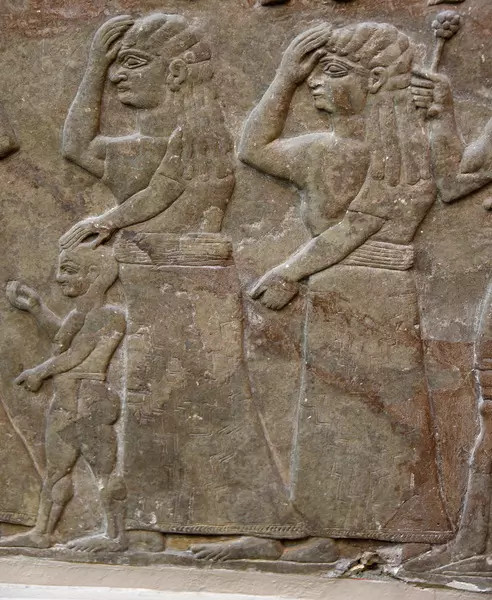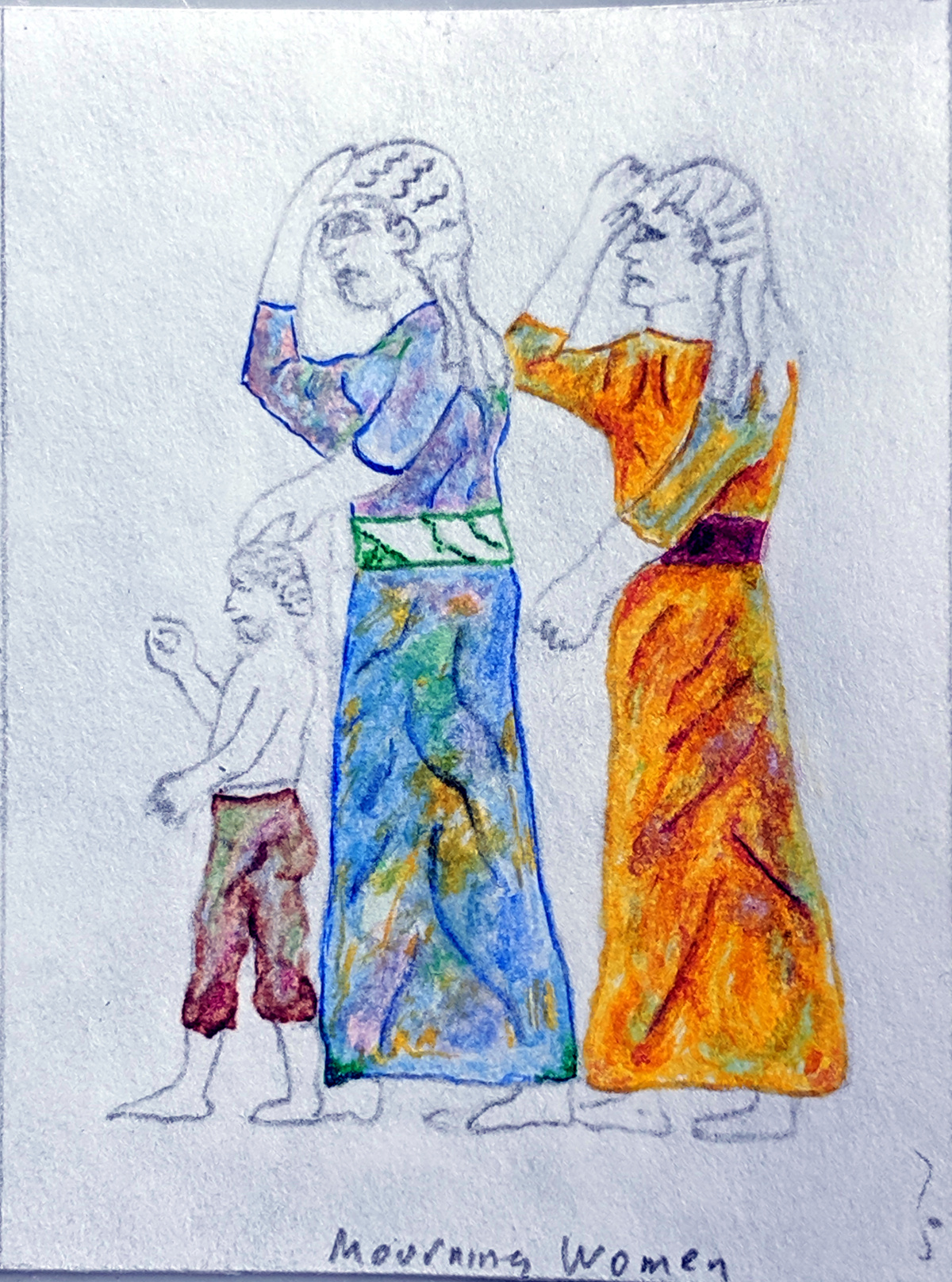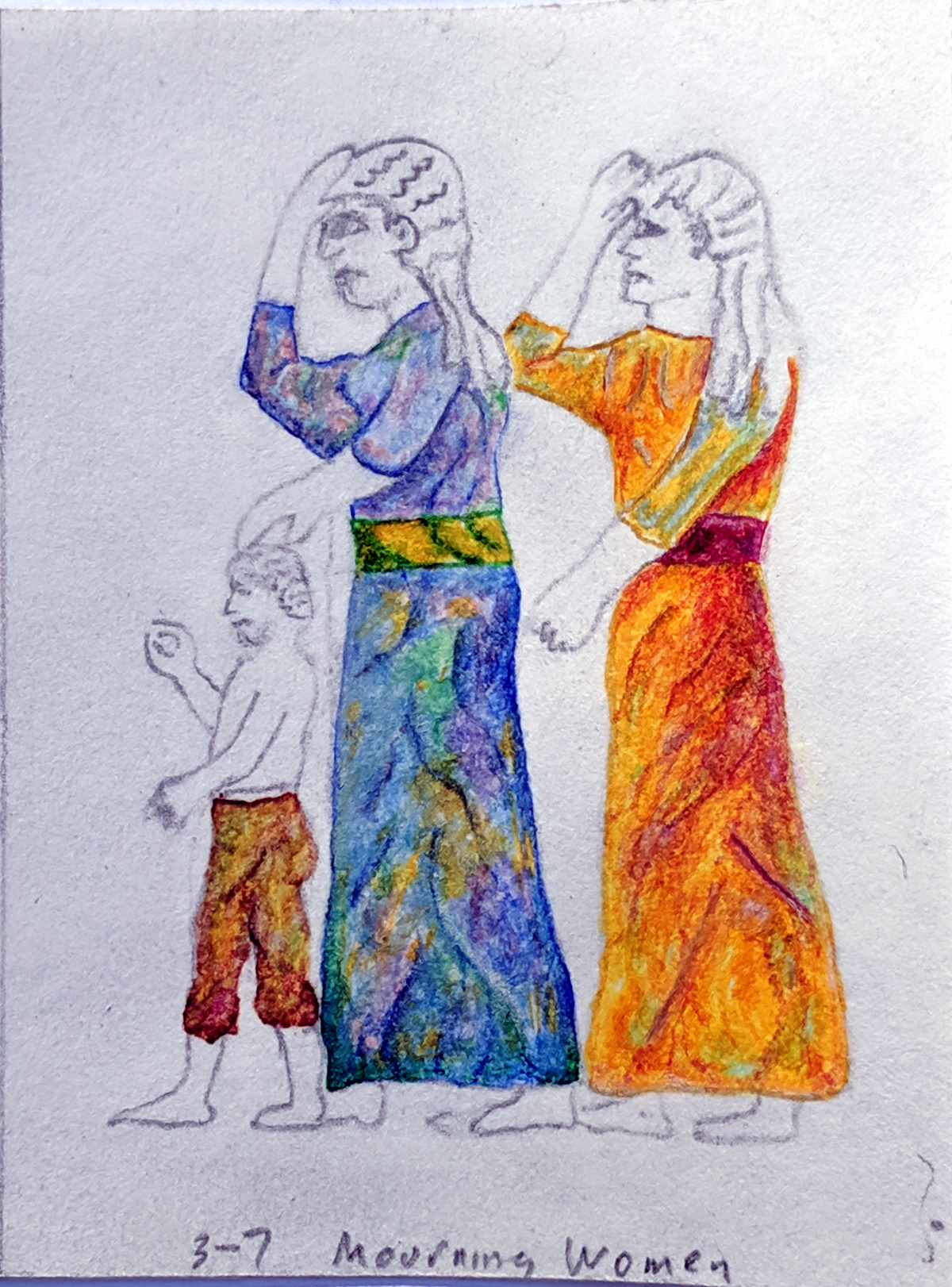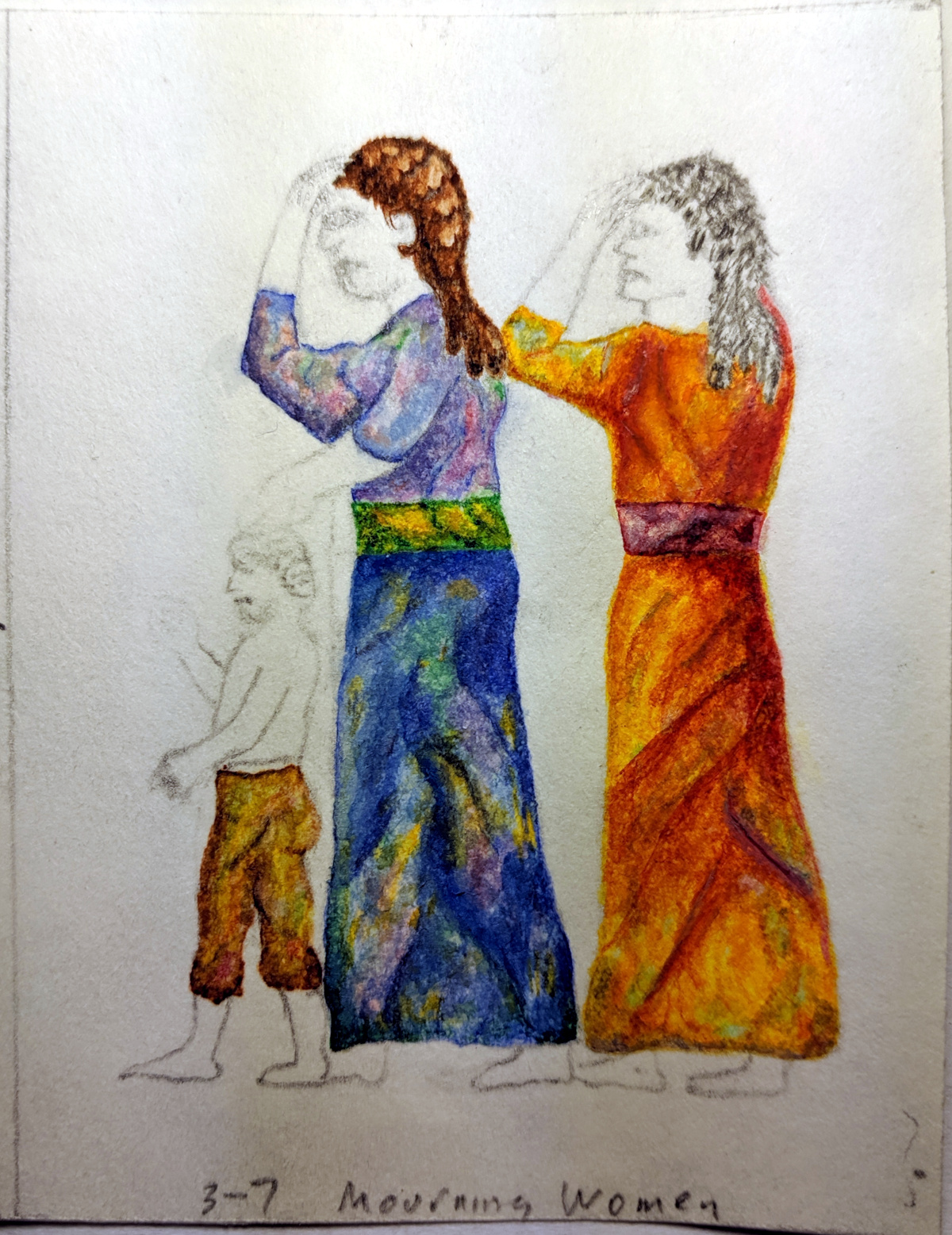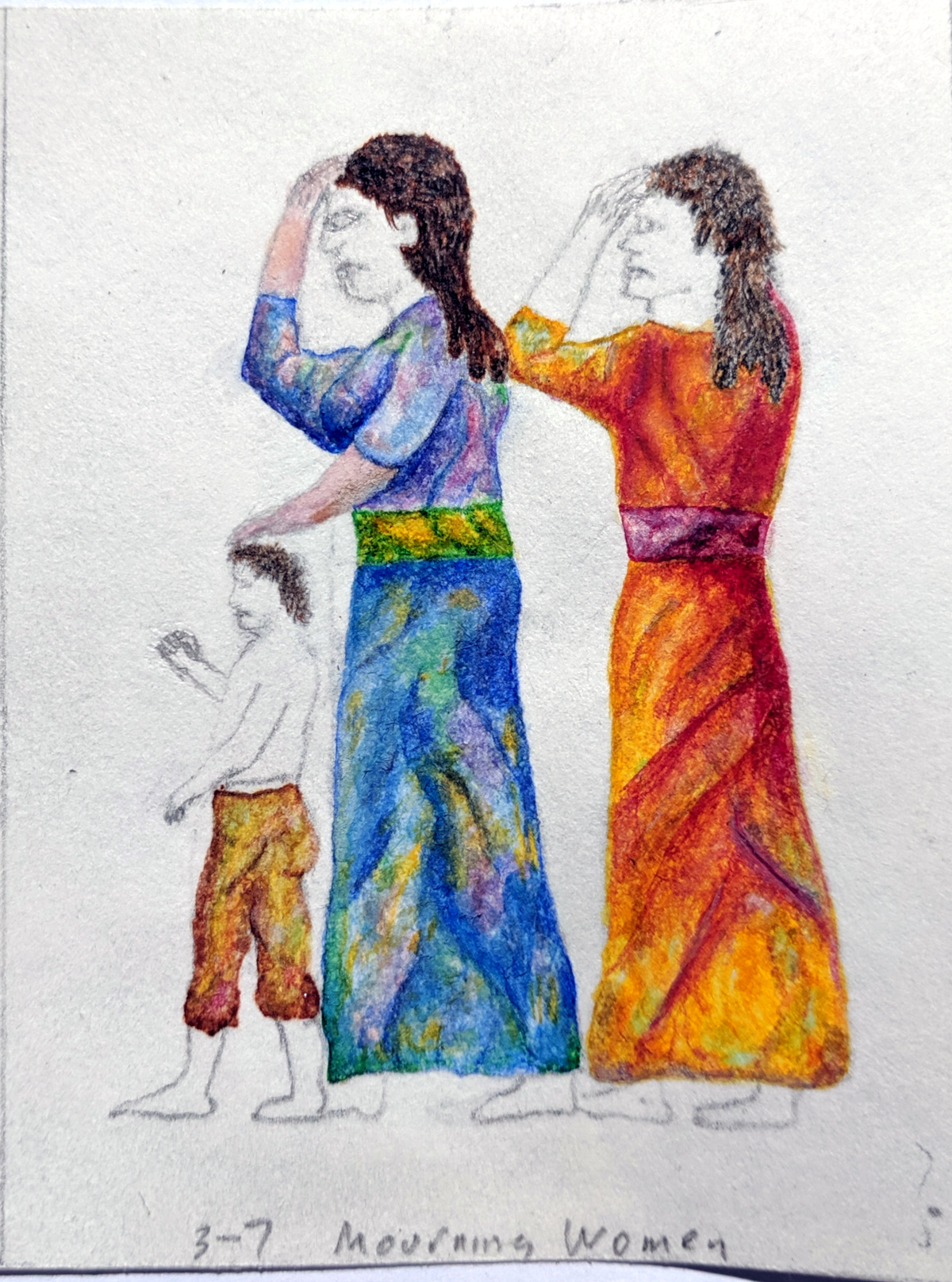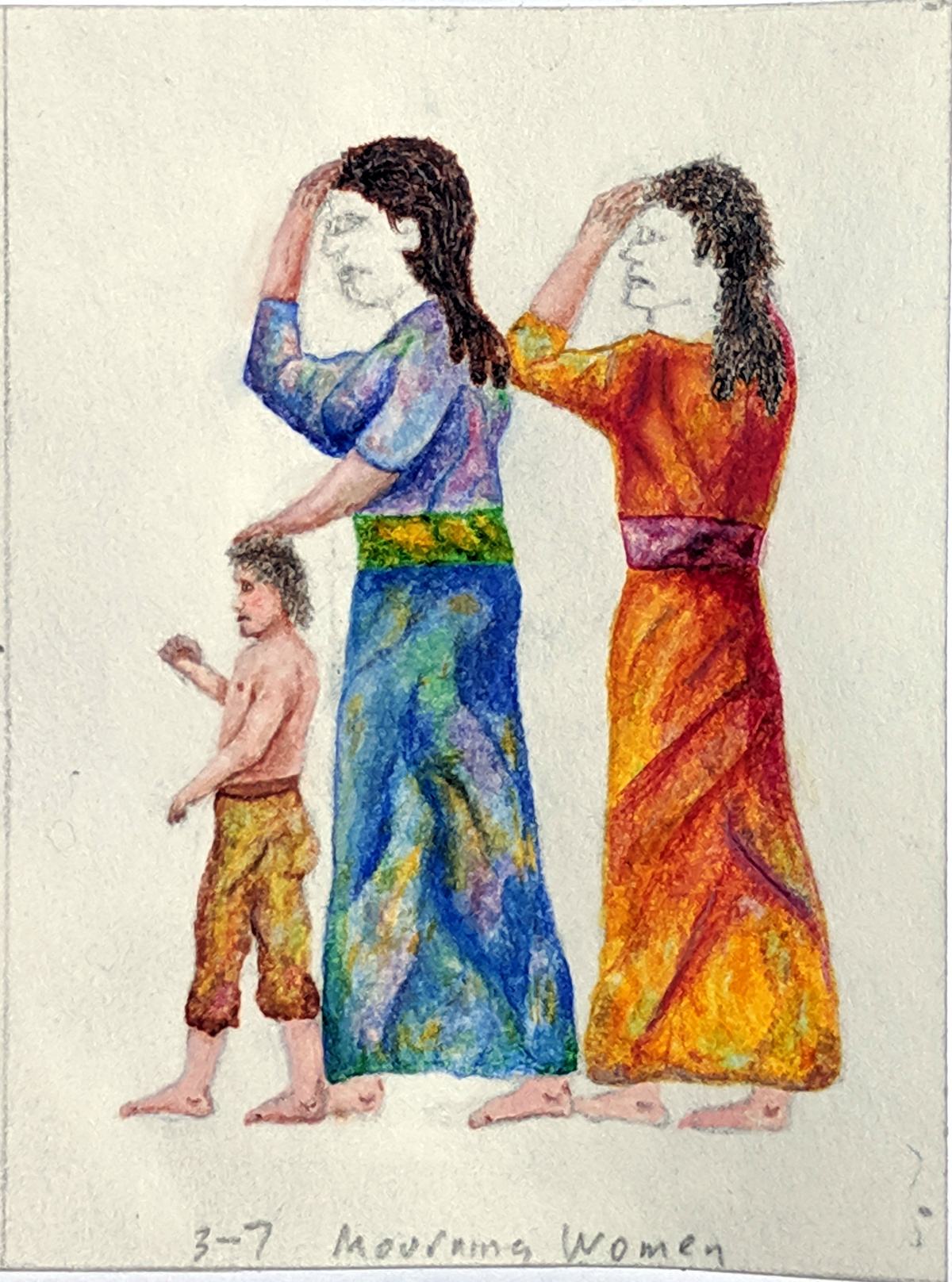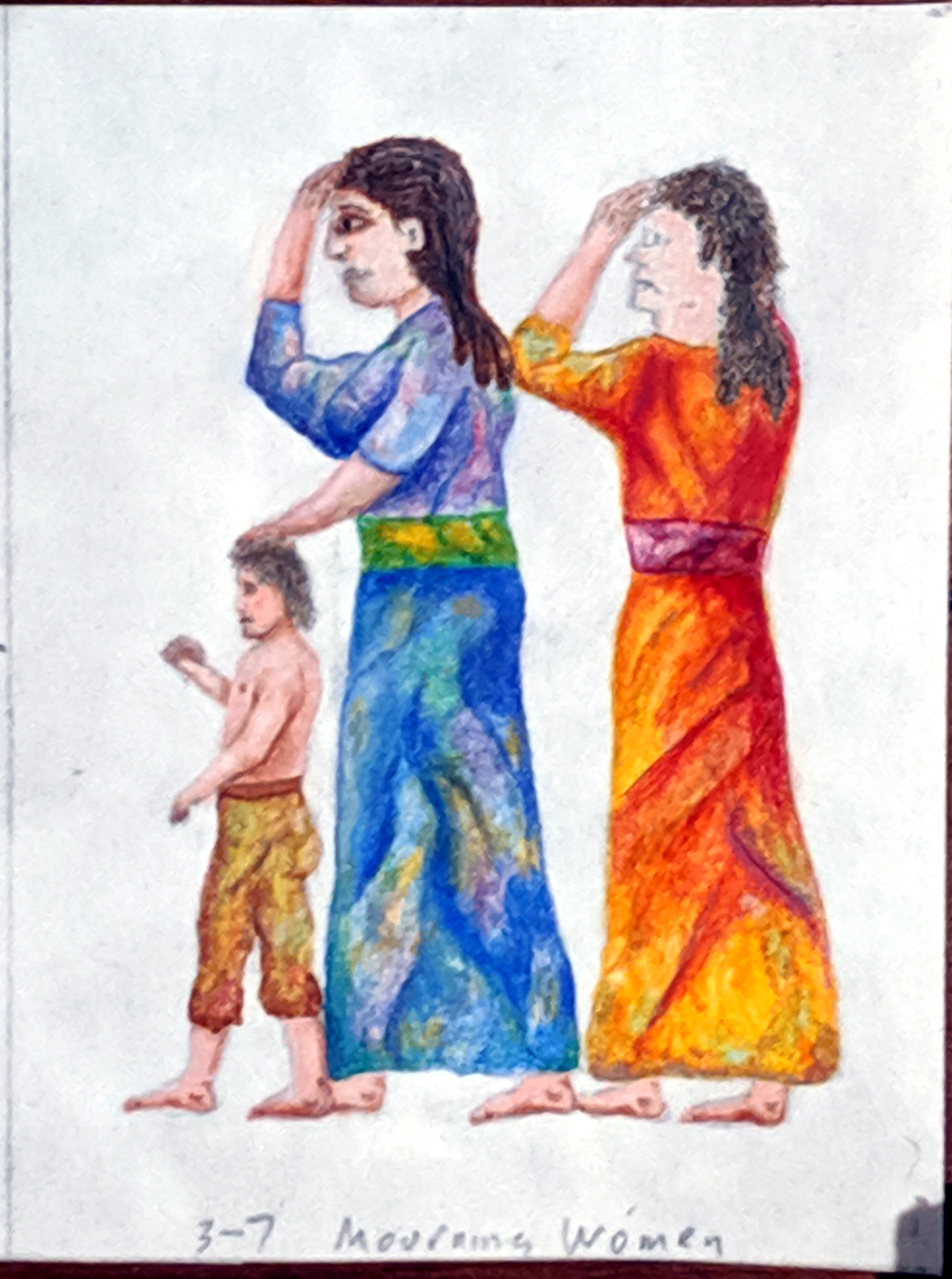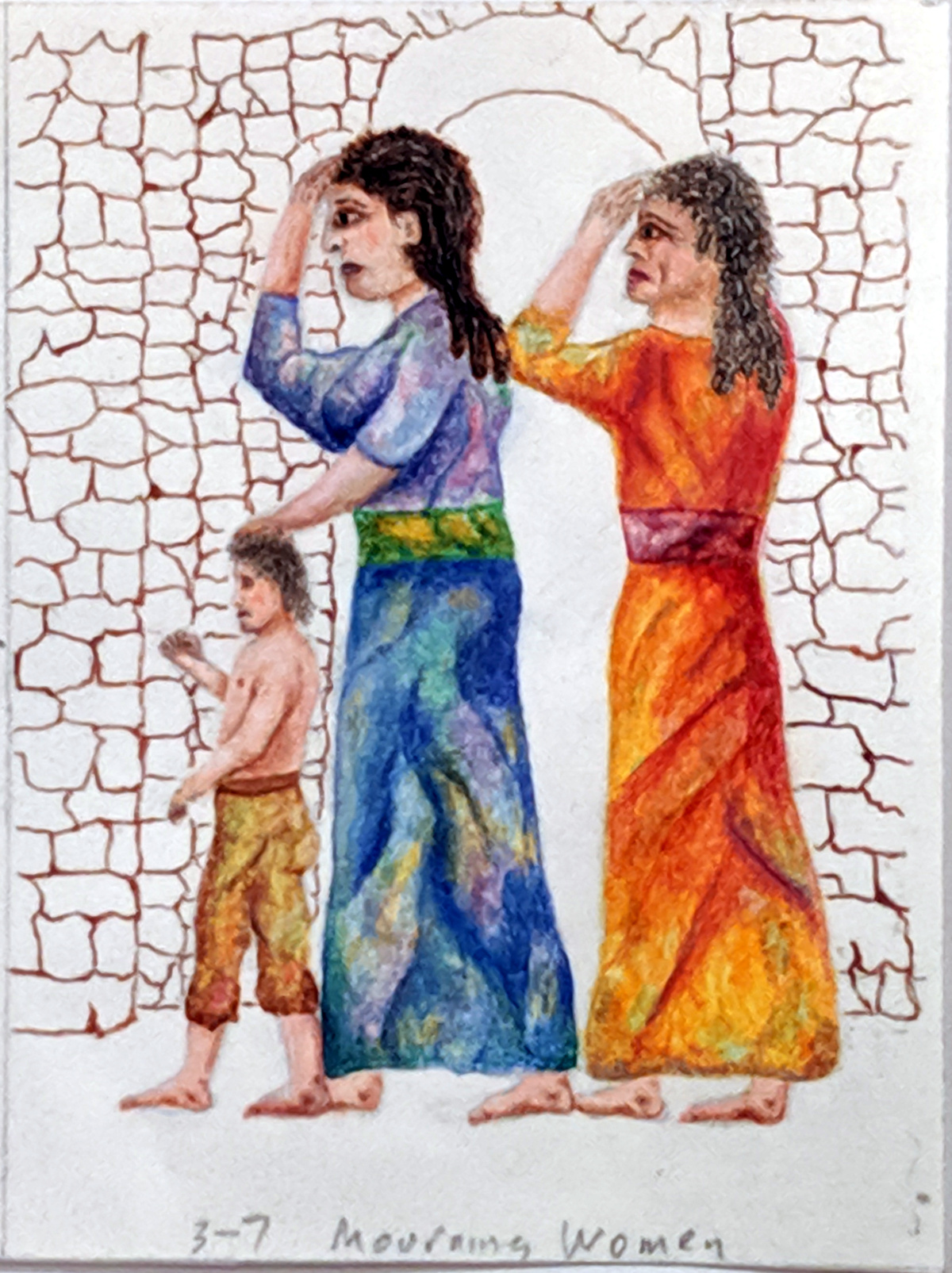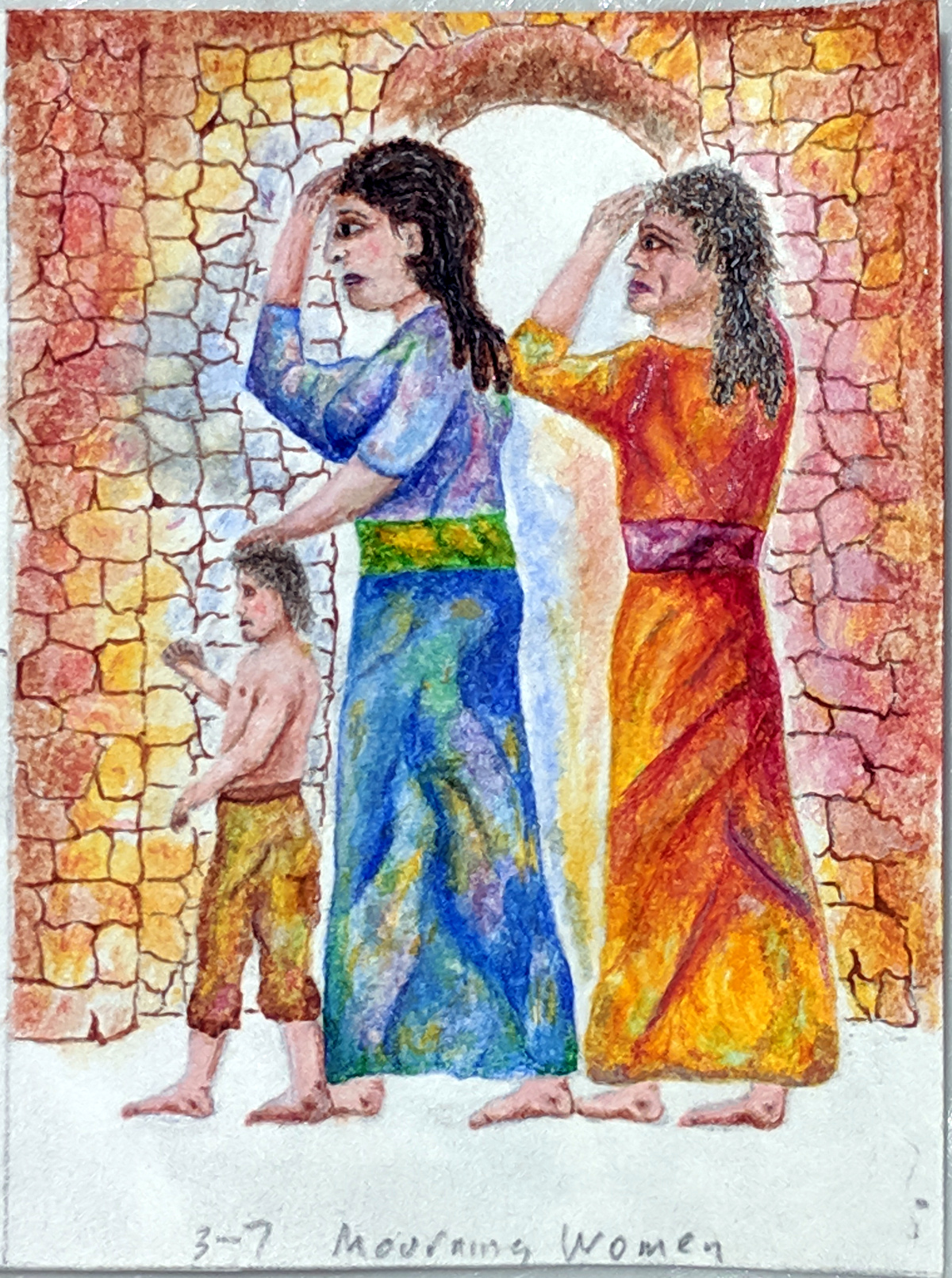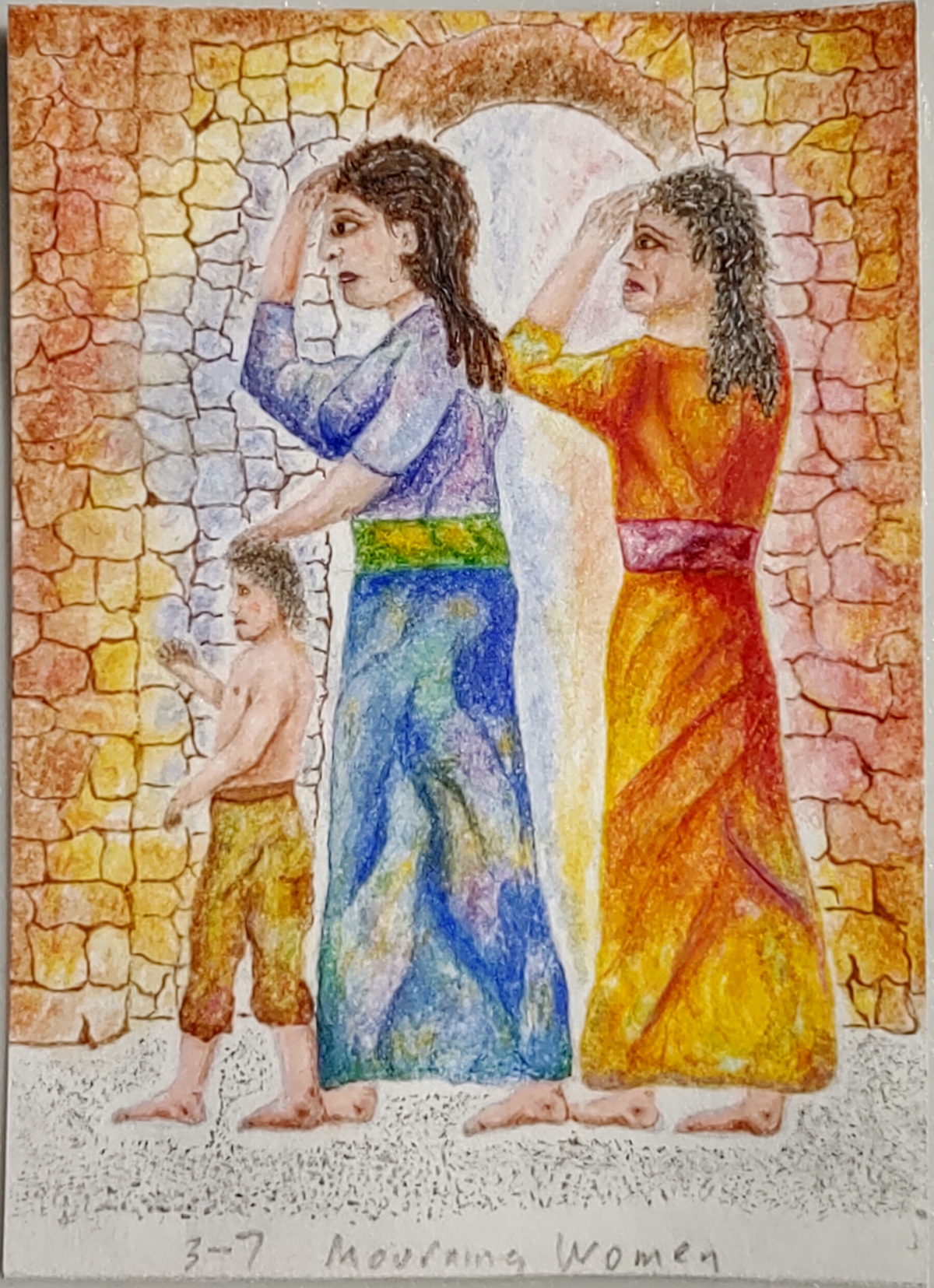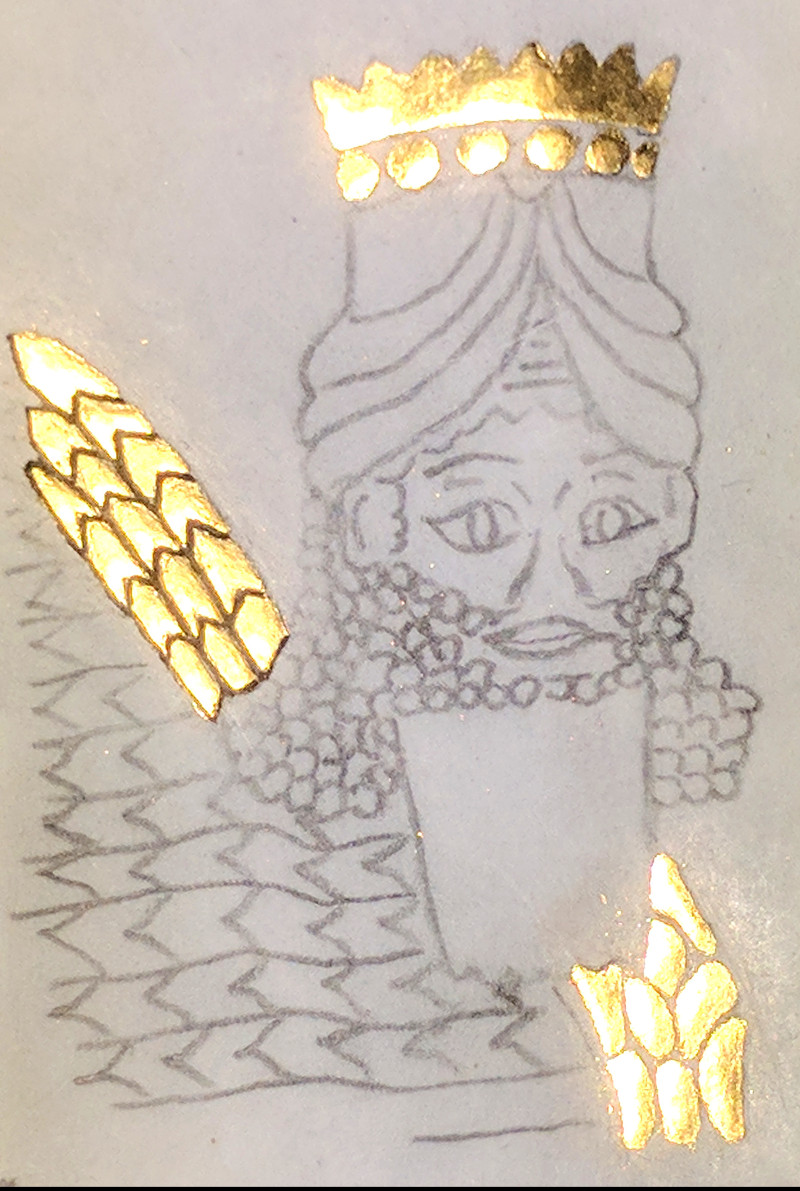As I have explained in earlier posts, about half of the images I am producing for our Megillat Esther are derived from art and objects that were either produced during the Achaemenid empire, or that could have been found within the borders of that empire. Why this focus on the Achaemenid empire? Xerxes I was one of the Achaemenid emperors, and he is commonly associated with Achashverosh, the king in the Book of Esther! Thus, it is conceivable that Xerxes may have used some of the gold and silver objects I have illustrated for our manuscript, objects that we might imagine Achashverosh used during the party he threw at the beginning of the Esther story.
So, our megillah might stand as an art history lesson, as well!
The image below comes from a bas relief that was a rather long chariot ride from Susa (Shushan), where Achashverosh held court. It is part of the gate of Nimrud (near Erbil in modern Iraq), produced by the Assyrian emperor Ashurnasirpal, about 350 years before Xerxes. It shows women mourning after one of Ashurnasipal’s conquests. I chose it to represent the Jews of Achashverosh’s kingdom, after they learn of Haman’s plot to exterminate them.
The slideshow below shows the progression of the image as I painted it.
